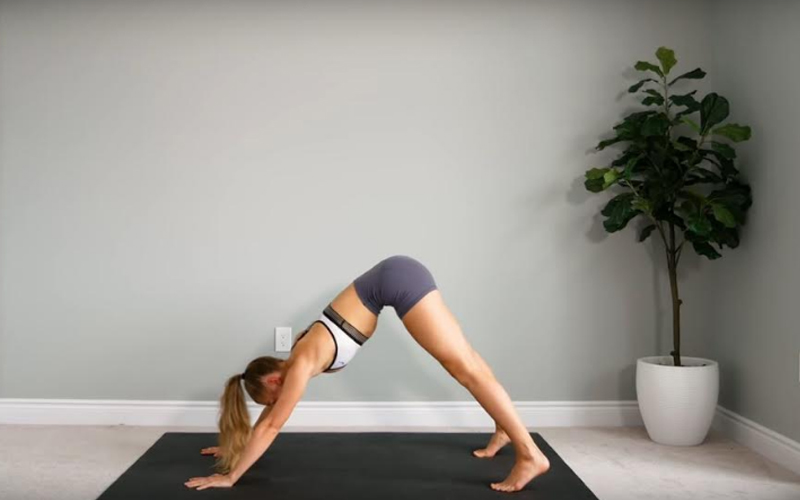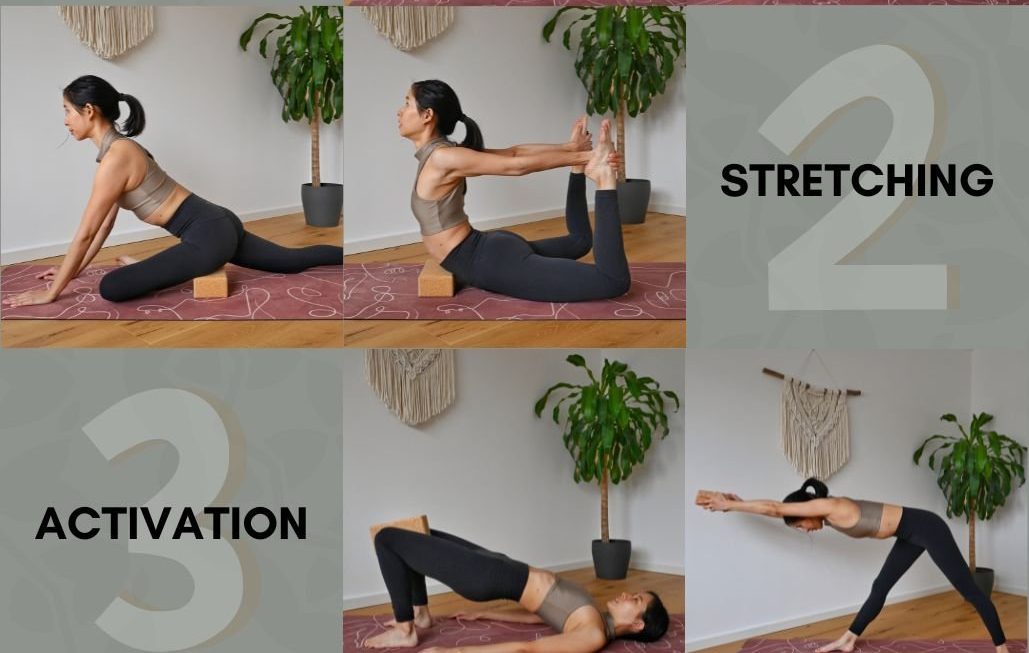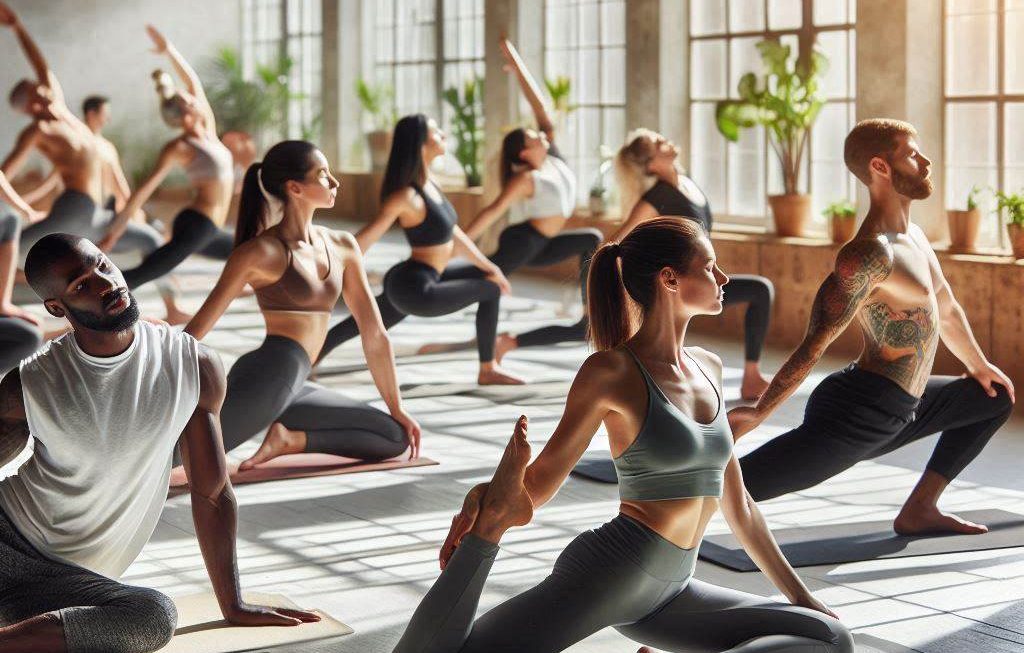
Teaching a Yin Yoga class can seem challenging at first. But with the right approach, it becomes a rewarding experience for both the teacher and the students.
Yin Yoga focuses on slow, gentle movements and long-held postures. It targets deep connective tissues and promotes relaxation and flexibility. If you are looking to guide students through a serene and introspective practice, Yin Yoga is ideal. This blog post will provide essential tips on how to teach a Yin Yoga class effectively.
You will learn how to create a calming environment, choose appropriate postures, and guide your students through the practice with mindfulness and care. By the end, you will feel confident in leading a Yin Yoga class that nurtures both body and mind.
Introduction To Yin Yoga
Yin Yoga is a slow-paced style of yoga. It involves holding poses for longer periods. This practice targets deep connective tissues and fascia. It aims to improve flexibility and increase circulation in the joints.
Origins And Philosophy
Yin Yoga has roots in ancient China. It incorporates principles of traditional Chinese medicine. The practice balances the body’s energy, known as “chi.” Paul Grilley introduced Yin Yoga to the West in the late 20th century. He combined Taoist Yoga with Indian Hatha Yoga. The philosophy emphasizes the importance of stillness and patience. It encourages practitioners to embrace discomfort and challenge.
Benefits Of Yin Yoga
Yin Yoga offers numerous benefits. Here are some key advantages:
- Improved Flexibility: Holding poses for longer periods stretches deep tissues.
- Increased Circulation: It enhances blood flow to the joints.
- Stress Relief: The meditative nature calms the mind.
- Better Joint Health: It helps in maintaining healthy joints by targeting connective tissues.
- Enhanced Mental Focus: The practice teaches mindfulness and patience.
Yin Yoga is suitable for all levels. Beginners and advanced practitioners can benefit. It’s particularly helpful for those with tight muscles. Athletes and individuals with a high-stress lifestyle may also find it beneficial.
Setting The Right Atmosphere
Setting the right atmosphere is crucial for a successful Yin Yoga class. It helps students relax and connect with their inner selves. A calm and serene environment will make your class more effective and enjoyable.
Creating A Calm Space
A calm space is essential for Yin Yoga. Start by choosing a quiet room. Remove any distractions such as electronics or clutter. The room should be clean and organized.
Use dim lighting to create a serene ambiance. Soft, indirect light works best. You can use candles or lamps with warm bulbs. Avoid harsh or bright lights.
Consider using essential oils or incense to add a soothing aroma. Lavender and sandalwood are popular choices for relaxation. Ensure the scent is subtle and not overpowering.
Provide comfortable mats, blankets, and bolsters. These props will help your students feel supported and at ease.
Choosing The Right Music
Music can enhance the Yin Yoga experience. Choose calming and gentle music. Nature sounds, soft instrumental, or ambient music work well.
Ensure the music is at a low volume. It should be in the background and not distracting. The goal is to create a peaceful and meditative atmosphere.
Here are some tips for selecting the perfect music:
- Match the tempo to the slow pace of Yin Yoga.
- Avoid lyrics to keep the focus on the practice.
- Use a playlist that lasts the entire class duration.
Remember, the right atmosphere can make a significant difference in your Yin Yoga class. Pay attention to details and create a space where students can truly relax and find inner peace.
Essential Props For Yin Yoga
Props are vital in Yin Yoga to ensure comfort and deepen stretches. Using the right props can support students and help them achieve better alignment.
Props To Use
Yin Yoga often involves holding poses for extended periods. This makes props essential for both beginners and advanced practitioners.
- Yoga Blocks: Support and elevate different parts of the body.
- Bolsters: Provide cushioning and reduce strain.
- Straps: Help in reaching and holding poses.
- Blankets: Add warmth and extra padding.
- Eye Pillows: Aid in relaxation and grounding.
How To Use Props Effectively
Each prop has a specific function in Yin Yoga.
- Yoga Blocks: Place under the hips in seated poses for better alignment.
- Bolsters: Use under the knees in reclined poses to relieve lower back tension.
- Straps: Wrap around feet in forward folds to maintain a gentle stretch.
- Blankets: Fold and sit on them for added height in seated poses.
- Eye Pillows: Place over the eyes during Savasana for a calming effect.
Using props effectively can enhance the Yin Yoga experience. They provide support, encourage relaxation, and help maintain proper alignment.
Structuring Your Class
Creating a well-structured Yin Yoga class can enhance the experience for your students. A balanced class structure ensures that participants feel guided and supported. Here’s how to structure your Yin Yoga class effectively:
Warm-up Poses
Begin the class with gentle warm-up poses. These poses help prepare the body for the main sequence. Warm-up poses should be slow and deliberate.
- Seated Forward Bend (Paschimottanasana)
- Butterfly Pose (Baddha Konasana)
- Cat-Cow Stretch (Marjaryasana-Bitilasana)
Encourage students to focus on their breath. This helps them to relax and get into the right mindset.
Main Sequence
The main sequence is the core of your class. It includes longer-held poses that target deeper tissues. Aim for a variety of poses to work different areas of the body.
- Dragon Pose (Anjaneyasana)
- Sphinx Pose (Salamba Bhujangasana)
- Child’s Pose (Balasana)
- Pigeon Pose (Eka Pada Rajakapotasana)
Hold each pose for 3-5 minutes. Remind students to breathe deeply and stay present.
Cool Down And Savasana
End the class with cooling down poses. These poses help relax the muscles and calm the mind. The cool down is crucial for balancing the intense stretches of the main sequence.
- Reclining Twist (Supta Matsyendrasana)
- Happy Baby Pose (Ananda Balasana)
- Legs Up the Wall (Viparita Karani)
Finally, guide your students into Savasana. This final relaxation pose allows the body to integrate the benefits of the practice.
| Sequence | Pose | Duration |
|---|---|---|
| Warm-Up | Seated Forward Bend | 2 minutes |
| Main Sequence | Dragon Pose | 5 minutes |
| Cool Down | Reclining Twist | 3 minutes |
By structuring your class in this way, you ensure a well-rounded and fulfilling Yin Yoga experience for your students.
Guiding Your Students
Guiding your students through a Yin Yoga class requires patience, empathy, and clear communication. As an instructor, your role is to create a nurturing environment where students can relax and deepen their practice. This involves using effective cueing and encouraging mindfulness throughout the session.
Effective Cueing
Effective cueing is essential in Yin Yoga. Unlike more dynamic forms of yoga, Yin Yoga involves holding poses for longer periods. This means your instructions should be precise and calming. Here are some tips:
- Use simple language: Avoid complex terms. Instead, describe the pose in easy-to-understand words.
- Be descriptive: Use imagery to help students visualize the pose. For example, “Imagine your body melting into the floor.”
- Offer modifications: Always provide options for different levels of flexibility and strength.
- Maintain a calm tone: Your voice should be soothing and steady to help students stay relaxed.
Encouraging Mindfulness
Mindfulness is a core element of Yin Yoga. Encouraging students to focus on their breath and bodily sensations can enhance their practice. Here are some strategies:
- Start with a grounding exercise: Begin the class with a few minutes of deep breathing to center the students.
- Guide body awareness: Ask students to notice how each pose feels in their body. Encourage them to observe without judgment.
- Integrate breath work: Remind students to connect their breath with their movements. This can deepen their relaxation.
- Provide moments of stillness: Allow time for quiet reflection between poses. This helps students internalize their experience.
Incorporating these techniques can make your Yin Yoga class more effective and enjoyable for your students. Remember, your guidance should foster a sense of peace and introspection, creating a safe space for personal growth.
Common Mistakes To Avoid
Teaching a Yin Yoga class is a rewarding experience. However, certain mistakes can hinder the effectiveness of your sessions. Being aware of these mistakes can help you create a more enriching experience for your students.
Overloading Information
One common mistake is giving too much information at once. Students can become overwhelmed. They need time to absorb the instructions. Keep your cues simple and direct.
- Focus on one alignment cue at a time.
- Use plain language to describe poses.
- Avoid lengthy explanations.
Silence is golden in Yin Yoga. Allow students to experience the poses. Let them feel their way into the postures. This fosters a meditative state and deeper practice.
Ignoring Individual Needs
Every student is unique. Ignoring individual needs is a big mistake. Not all students have the same flexibility or experience.
| Common Issue | Solution |
|---|---|
| Limited Flexibility | Offer props like blocks and bolsters. |
| Previous Injuries | Suggest modifications or alternatives. |
| New to Yoga | Provide extra guidance and support. |
Observe your students. Pay attention to their comfort levels. Encourage them to listen to their own bodies. This creates a safer and more inclusive class environment.
Adjustments And Modifications
Adjustments and modifications are key components of teaching a Yin Yoga class. They ensure that students practice safely and comfortably. Tailoring poses to individual needs can help prevent injuries and enhance the overall experience. Here’s how to effectively incorporate adjustments and modifications in your class.
Hands-on Adjustments
Hands-on adjustments can provide students with guidance. They help in achieving the correct alignment. Approach students gently and with respect. Always ask for consent before making any physical adjustments. Use light pressure to avoid causing discomfort. Focus on areas where students need the most support.
Observe each student’s body language. It can indicate if they are uncomfortable. Adjustments should be subtle and mindful. Aim to enhance the student’s experience, not force them into poses. Regularly communicate with your students. This helps in understanding their comfort levels.
Offering Alternatives
Offering alternatives is essential in a Yin Yoga class. Each student’s flexibility and strength vary. Provide different options for each pose. This allows students to choose what feels best for them.
Use props like blocks, bolsters, and straps. They can aid in achieving poses comfortably. Demonstrate how to use these props effectively. Encourage students to listen to their bodies. Remind them that it’s okay to take a break if needed.
Be creative with modifications. Offer seated or reclined versions of poses. This can help students with limited mobility. Ensure that every student feels included and supported.
Building A Community
Building a community within your Yin Yoga class is crucial. A strong community creates a sense of belonging and support among students. It enhances their learning experience and encourages regular attendance. In this section, we’ll explore how to engage with students and foster a supportive environment.
Engaging With Students
Engagement starts with the instructor. Make sure to greet each student warmly. Learn their names and use them during the class. This simple gesture makes students feel seen and valued.
- Ask about their day or week.
- Show genuine interest in their well-being.
- Encourage them to share their experiences.
During the class, offer adjustments and modifications. Use clear, simple instructions. This helps students feel confident in their practice. Encourage questions and provide thoughtful answers. This interaction builds trust and rapport.
Fostering A Supportive Environment
A supportive environment is key to a successful Yin Yoga class. Create a safe, welcoming space. Ensure the room is clean, quiet, and comfortable.
- Use soft lighting and calming music.
- Provide props like blocks, blankets, and bolsters.
- Maintain a positive and inclusive atmosphere.
Encourage students to listen to their bodies. Remind them that it’s okay to take breaks or modify poses. This fosters a non-competitive environment where everyone feels accepted.
Promote a sense of community through group activities. Consider organizing occasional social events or workshops. These activities help students connect with each other outside of class. It strengthens their bond and commitment to the practice.
In summary, engaging with students and fostering a supportive environment are vital. These practices build a strong, connected community within your Yin Yoga class.
Continuing Education
Continuing education is crucial for yoga instructors. It ensures that they stay updated with the latest trends and techniques. For those teaching Yin Yoga, ongoing learning helps to deepen their practice and improve their teaching skills. This section will explore the importance of advanced training and staying updated with current trends in Yin Yoga.
Advanced Training
Advanced training provides a deeper understanding of Yin Yoga. It covers anatomy, philosophy, and advanced postures. Many yoga schools offer advanced courses specifically for Yin Yoga. These courses often include:
- In-depth anatomy studies focused on connective tissues.
- Advanced sequencing techniques for Yin Yoga classes.
- Philosophical teachings related to Yin Yoga practice.
- Hands-on adjustments and assists.
Instructors gain confidence and can offer more to their students. Advanced training also opens doors to new teaching opportunities. It shows dedication and a commitment to self-improvement.
Staying Updated With Trends
The world of yoga is always evolving. New research and trends emerge regularly. Staying updated with these trends is essential for Yin Yoga instructors. Some ways to stay current include:
- Attending workshops and seminars.
- Subscribing to yoga journals and magazines.
- Joining online forums and communities.
- Following renowned Yin Yoga teachers on social media.
These resources provide valuable insights. They help instructors keep their classes fresh and engaging. Trends can introduce new postures, sequences, and teaching methods. Staying updated ensures that instructors remain relevant and effective in their teaching.
Frequently Asked Questions
What Are The Basics Of A Yin Yoga Class?
A Yin Yoga class focuses on passive, long-held poses. It targets connective tissues, promoting flexibility and relaxation. Use props for support.
How Long Should Poses Be Held In Yin Yoga?
In Yin Yoga, poses are typically held for 3-5 minutes. This allows deeper tissue work and enhances flexibility over time.
What Props Are Needed For Yin Yoga?
Common props for Yin Yoga include bolsters, blocks, and blankets. They provide support and help maintain poses comfortably.
How Do I Create A Calming Environment?
Dim the lights and play soft, soothing music. Use essential oils or incense for a tranquil atmosphere.
Conclusion
Teaching a Yin Yoga class can be deeply rewarding. Focus on creating a calm atmosphere. Guide your students gently through each pose. Encourage deep breathing and relaxation. Remember, patience is key. Adjustments and modifications help everyone feel comfortable. Consistent practice improves flexibility and mindfulness.
Your students will appreciate your thoughtful guidance. Stay present and enjoy the journey together. Yin Yoga offers a peaceful, restorative experience. Your dedication makes a positive impact. Keep sharing the benefits of Yin Yoga with your class.




